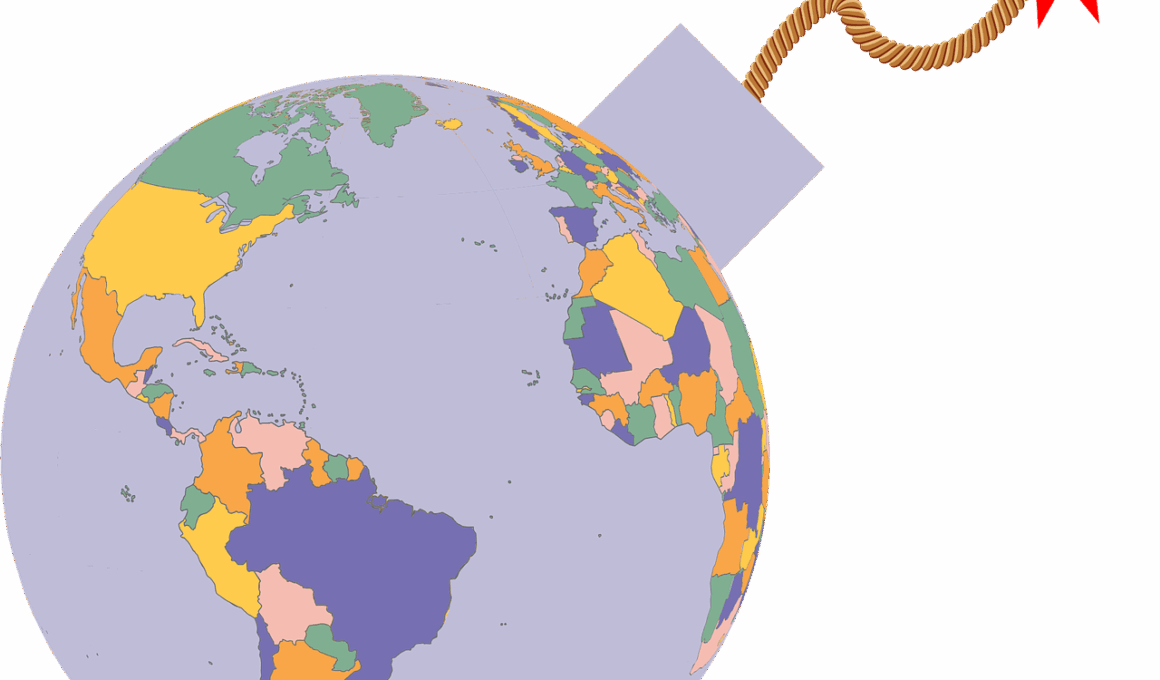Incorporating Political Risk Insurance Costs in Models
In the realm of international financial modeling, the incorporation of political risk insurance costs is crucial. This insurance mitigates potential losses from political instability, government actions, and related events that may affect foreign investments. Investors need to assess political risks comprehensively, making informed decisions. Political risk can vary significantly across regions and specific countries. Factors such as changes in government, civil unrest, and other disturbances can impact investment value. Incorporating these risks into financial models ensures a more realistic representation of potential returns. A robust process requires identifying possible political triggers and estimating their financial implications. Assessing local climates is essential, as governance quality and historical trends offer insights regarding future predictability. Adopting a standardized approach towards these evaluations can streamline future risk assessments. Additionally, financial models must reflect the unique costs associated with purchasing political risk insurance. Understanding these costs can support better investment strategies, potentially guiding capital allocation effectively. Ultimately, these considerations become integral to successful international investments, especially for firms operating in emerging markets, where political uncertainties are frequent. Such comprehensive models aim to provide clarity and confidence to stakeholders involved in the decision-making process.
Furthermore, effective methods of integrating political risk insurance costs into financial models demand considerable diligence. Investors should investigate numerous insurance products, assessing coverage options to find the best fit for their specific circumstances. Leading insurers provide various products aimed at addressing distinct types of political risks; therefore, engaging comprehensively with insurance companies can yield significant advantages. By building a network of reliable insurance providers, firms can enhance their overall risk management strategies. Selecting the most appropriate product depends on an extensive understanding of both local and international political climates. While coverage details might differ, fundamental pricing principles generally remain consistent. Modeling these costs requires proper data analytics capabilities, to foresee probable risks and gauge associated insurance premiums accurately. Unforeseen events can derail expected outcomes; thus, financial projections must account for these contingencies. Ensuring that the model is dynamic and can adapt to new information is essential for sustained relevance. The presence of an adaptable approach fosters continuous learning and allows financial experts to respond to an evolving landscape quickly. By keeping a watchful eye on changing political narratives, investors can navigate potential pitfalls, ensuring a robust portfolio while managing risk effectively.
Analyzing the Impact of Political Risk on Investment
Political risk plays an essential role in determining investment suitability, especially in volatile regions. Understanding how different political dynamics affect returns allows stakeholders to categorize risk levels accurately. Economic conditions are often intertwined with political situations; thus, analyses should encompass both financial and political frameworks. Factors such as the degree of government intervention, electoral stability, and public sentiment can fluctuate dramatically and directly influence market conditions. Stakeholders must stay informed about local and global trends, ensuring timely updates to their investment strategies. Employing sensitivity analyses within financial models can highlight how different political scenarios impact potential returns. This aspect of the evaluation encourages more detailed projections, creating room for diversified strategies that mitigate risks associated with adverse political changes. Additionally, it promotes the importance of scenario planning; understanding potential political outcomes can prepare investors for varied circumstances. Collaboration with local experts can also provide valuable insights into sophisticated political climates. In summary, dedicated attention to how political elements influence investments leads to more informed decision-making processes, which is essential for those considering robust international portfolios.
In the financial modeling space, effectively incorporating political risk insurance costs requires a multidisciplinary approach. Collaboration among financial analysts, hedge fund managers, and political risk experts enables a more holistic view of potential challenges. Analysts should strive to understand the implications of political risks within themes such as global trade dynamics, currency fluctuations, and shifting market sentiments. By creating a collaborative framework, relevant data and knowledge can be leveraged effectively, improving the overall modeling process. Moreover, dedicated tools such as risk management software can facilitate the analysis of political insurance costs and enhance the decision-making framework. Understanding and applying these insights transforms a standard financial model into a comprehensive analytical tool that considers various external pressures. Additionally, modeling should take into account the potential effects of international agreements and policy changes that may arise or shift. Investors must prepare for different circumstances resulting from unpredictable events, including changes in trade relations or sanctions imposed by governing bodies. Therefore, a proactive approach in anticipating how political factors change the investment landscape will lead to better performance. By considering these various dimensions, stakeholders can enhance their financial modeling projects significantly.
Addressing Political Risk Through Strategic Planning
Moreover, strategic planning should address political risk not just reactively but also proactively. Financial modeling ought to forecast potential political developments based on historical patterns and statistical analyses. Investors should actively maintain relationships with local stakeholders to stay abreast of shifting sentiments. Engaging with local communities and stakeholders provides insights that financial models alone might miss. Additionally, creating contingency plans for diverse political scenarios ensures preparedness against unexpected twists. Simulation exercises can also be valuable; they allow investors to visualize how various political events could alter financial standings. This preparedness enhances confidence in making strategic decisions, fostering a culture of informed risk management. Financial models should also incorporate flexibility for adapting to changing political climates. This can mean modifying risk factors according to emerging trends, aligning with broader geopolitical contexts. Emphasizing sustainable investments supported by stable governance structures can also reduce exposure to political risks. Therefore, deploying responsible investing strategies can yield dividends in terms of risk mitigation. Ultimately, political risk considerations intertwined with strategic planning elevate financial modeling practices, resulting in stronger and more resilient investment outcomes.
In summary, incorporating political risk insurance costs into international financial models is both an art and a science. The complexity of political landscapes demands sophisticated understanding and meticulous analysis. Maintaining a balanced view of potential risks and rewards leads to enhanced decision-making processes for investors. Partnering with political experts can provide valuable insights about the broader implications of current events, aiding in risk assessment. Financial models should reflect potential variances in political stability, ensuring projections remain relevant and useful. The exploration of different political risk scenarios will cultivate a dynamic modeling environment. By accounting for potential shifts, models can adapt, fostering more insightful analyses. Moreover, positioning political risk considerations alongside traditional financial performance metrics leads to an integrated approach that enhances clarity in decision-making. As investors recognize the multifaceted benefits of political risk insurance, their modeling strategies will effectively respond to changes in global political climates. This broader understanding empowers stakeholders with the tools to navigate uncertainties successfully, ultimately promoting a healthier investment landscape. Making informed decisions while integrating political risk factors ensures a more resilient international financial model that withstands challenges.
Lastly, as international markets continue evolving, the incorporation of political risk insurance remains imperative for sound financial modeling. Stakeholders must remain vigilant about changes in regulations, public policies, and shifts in political landscapes that may influence their investments. By remaining keenly aware of the geopolitical factors at play, investments can be structured to optimize returns while minimizing risks effectively. Continuous vigilance and adaptability will enhance the resilience of financial models over time. Awareness of trending political transformations drives a sense of urgency in assessing risks and opportunities accordingly. If firms neglect the relevance of political risks, they may face avoidable financial setbacks. Therefore, integrating political risk insurance costs brings a competitive edge to international financial models, enabling investors to navigate complexities. Training future analysts with a robust understanding of political climates will prepare them to assess risk more effectively. The fusion of finance and political analysis is central to decision-making processes and strategic investment planning. Ultimately, this amalgamation maximizes financial modeling potential and reinforces stakeholders’ trust in these frameworks.


